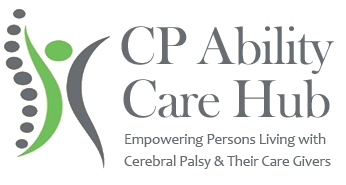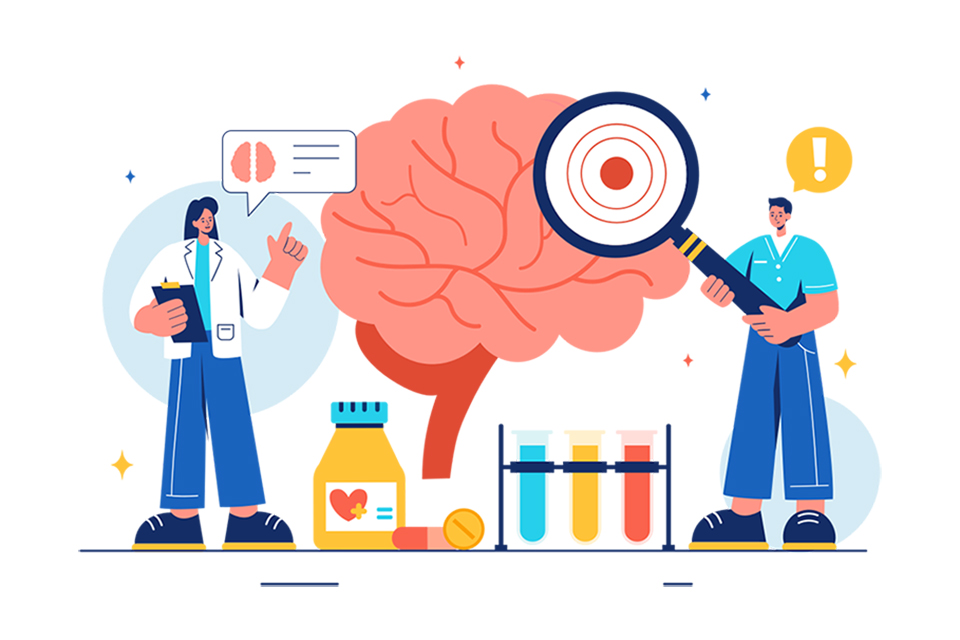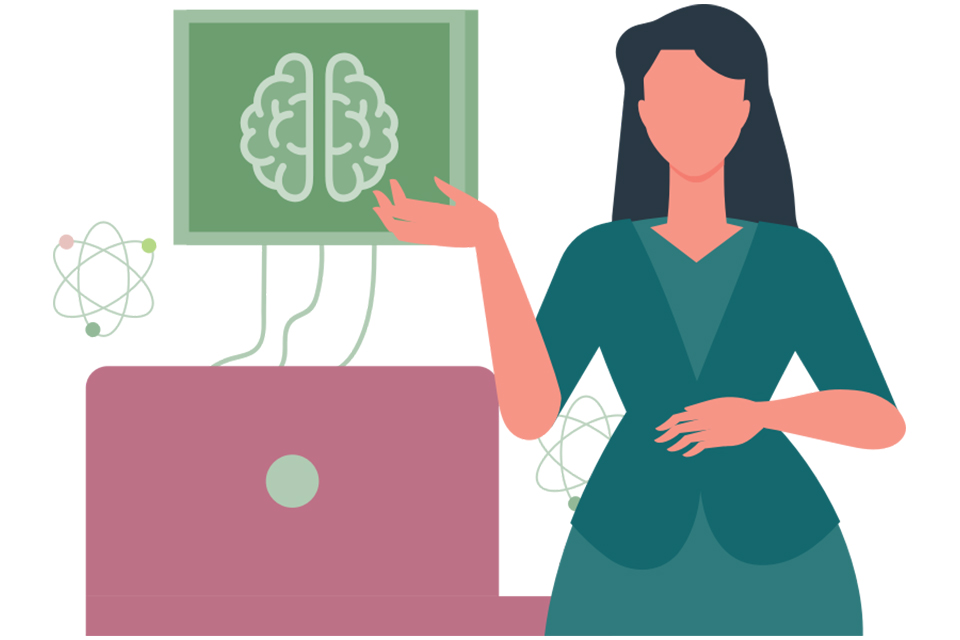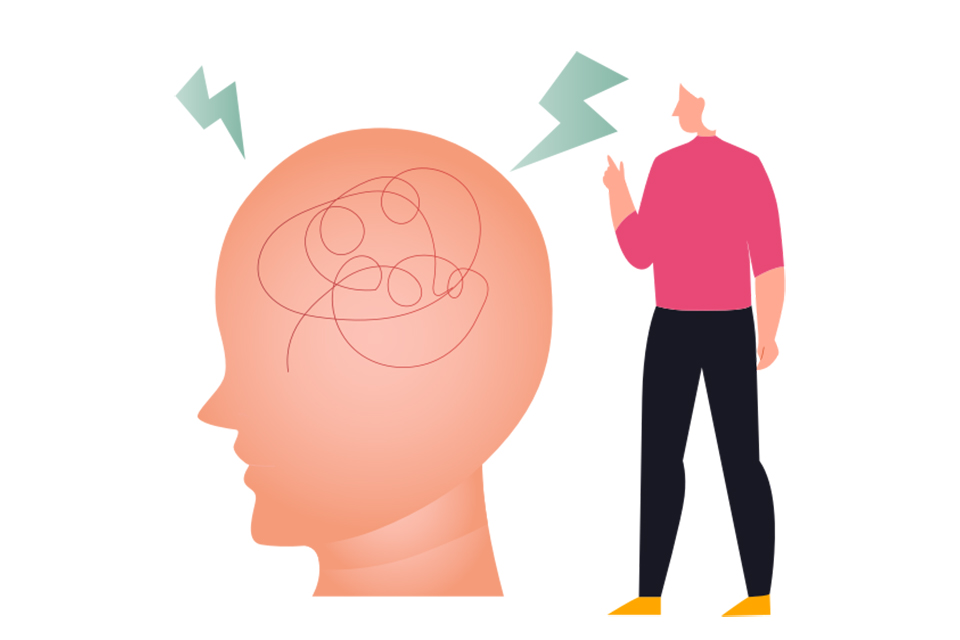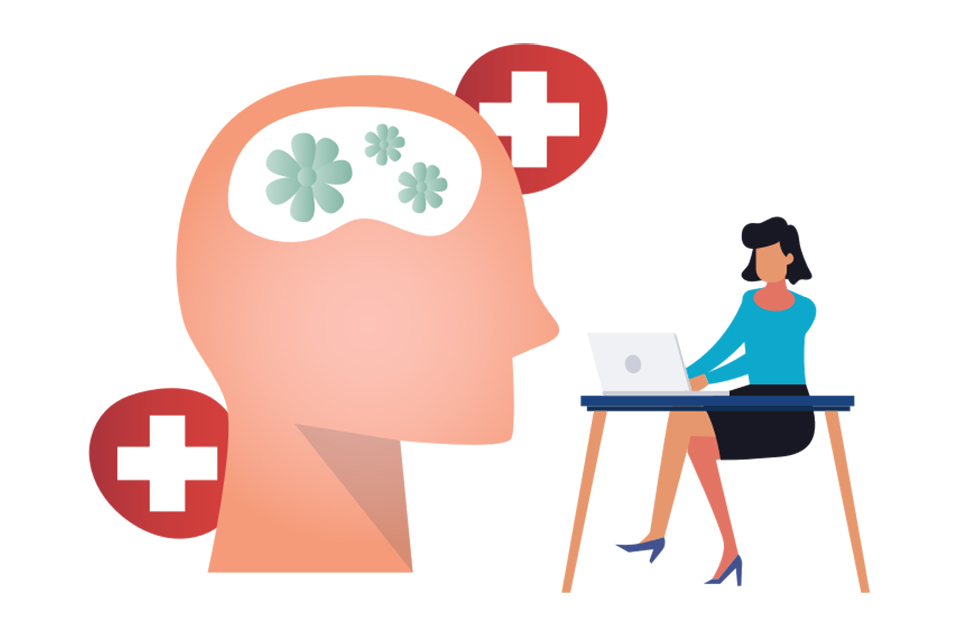Seeking a Diagnosis

Assessments and outcome measures
Assessments are used to understand the types and severity of cerebral palsy (diagnosis), to help make predictions about the future (prognosis), to assist with planning interventions and to measure the outcomes or effectiveness of interventions and therapies (outcome measures). Assessments are also used in research. The assessments and outcome measures which we include on this site have either been developed specifically to be used with people with cerebral palsy or are widely understood to be appropriate to use with people with cerebral palsy. We have focused on including assessments and outcomes measures which are typically used in clinical practice, rather than in research.
Imaging Tests used for Diagnosing Cerebral Palsy
Certain cerebral palsy tests can identify brain abnormalities linked to the condition and help support a diagnosis. Learn more about imaging tests used for a diagnosis of cerebral palsy below.
Magnetic resonance imaging (MRI)
An MRI creates detailed 3D images of the brain, helping doctors spot irregularities linked to motor function issues in babies and children.
This safe and painless cerebral palsy brain scan is often used when early symptoms appear.
During an MRI, the child lies on a table that slides into a tunnel-shaped scanner. The machine uses a strong magnet and radio waves to capture black-and-white images of the brain.
The process can take up to an hour, and young children may need sedation to remain still for accurate results.
MRI tests can help determine the underlying cause of CP, like brain injury or abnormal development. Early imaging plays a crucial role in guiding a cerebral palsy diagnosis and determining treatment options.
Computed tomography (CT)
CT scans create cross-sectional images of a child’s brain and are often used to evaluate conditions that may resemble cerebral palsy.
The procedure takes about 20 minutes and produces images similar to X-rays, offering views from multiple angles for a detailed examination of brain structures.
A CT scan cannot directly confirm a cerebral palsy diagnosis. However, it can detect issues like head injuries and brain bleeds, including intracranial or intraventricular hemorrhage (IVH).
It can also detect skull fractures and other brain abnormalities. These insights help rule out other conditions and provide clues about the cause and timing of a brain injury.
Cranial ultrasound
This imaging test isn’t as detailed as an MRI or CT scan, but it is often used because it is quick and easy for the patient. Cranial ultrasounds provide images of brain tissue, helping doctors identify potential signs of cerebral palsy.
This technique, which uses a probe to send high-frequency sound waves through the baby’s brain, is pain-free.
Cranial ultrasounds reveal bleeding in the brain and other conditions that can lead to a cerebral palsy diagnosis. Doctors use cranial ultrasounds to detect white matter damage, a common cause of cerebral palsy.
Electroencephalogram (EEG)
An EEG measures the electrical activity of the brain. Children with seizures have distinct electrical patterns in their brains. Doctors use an EEG to diagnose epilepsy by recording those patterns.
During an EEG, patients will have a series of electrodes attached to their scalp so that the electrical energy can be measured.
Due to the link between cerebral palsy and epilepsy, a confirmed epilepsy diagnosis may increase the likelihood of a cerebral palsy diagnosis.
Other Tests for children with CP
In addition to standard imaging tests, doctors may conduct other evaluations for conditions that often accompany the diagnosis of cerebral palsy, such as intellectual disabilities.
Some other tests for CP include:
- 1. Hearing tests
- 2. Intellectual tests
- 3. Speech tests
- 4. Vision tests
Doctors may also order blood tests to rule out hereditary conditions that affect motor function in children who might have cerebral palsy.
It’s important to have the whole picture to create an effective cerebral palsy treatment plan.
Cerebral Palsy diagnosis by level of severity
A cerebral palsy diagnosis is often classified by severity as mild, moderate, or severe, providing insight into how the condition affects a person.
Doctors frequently use the Gross Motor Function Classification System (GMFCS) to assess motor impairment. This allows them to provide a prognosis (or long-term health outlook), which includes the potential for improvement in skills like sitting independently and walking.
Communication Function Classification System (CFCS)
The CFCS is a tool used to classify the everyday communication of an individual with cerebral palsy into one of five levels according to effectiveness of communication. It consists of five levels which describe everyday communication ability.
Classification on the CFCS is made by a person who is familiar with the individual’s communication in everyday situations, and is based on the effectiveness of communication between a sender and receiver of information.
CFCS considers the familiarity of a person’s communication partners.
All ways of communicating are considered including speech, gesture, facial expression and augmentative and alternative communication.
A person classified at Level I is a more able communicator than a person classified at Level V.
CFCS levels
- CFCS Level I - A person independently and effectively alternates between being a sender and receiver of information with most people in most environments.
- CFCS Level II - A person independently alternates between being a sender and receiver with most people in most environments but the conversation may be slower.
- CFCS Level III - A person usually communicates effectively with familiar communication partners, but not unfamiliar partners, in most environments.
- CFCS Level IV - The person is not always consistent at communicating with familiar communication partners.
- CFCS Level V - A person is seldom able to communicate effectively even with familiar people.
References:
- Visit the CFCS Communication Function Classification System website for more information.
Gross Motor Function Classification System (GMFCS)
The gross motor skills (e.g. sitting and walking) of children and young people with cerebral palsy can be categorised into 5 different levels using a tool called the Gross Motor Function Classification System (GMFCS) developed by CanChild in Canada.
GMFCS looks at movements such as sitting, walking and use of mobility devices. It is helpful because it provides families and clinicians with:
- 1. a clear description of a child’s current motor function, and
- 2. an idea of what equipment or mobility aids a child may need in the future, e.g. crutches, walking frames or wheelchairs.
Generally, a child or young person over the age of 5 years will not improve their GMFCS-E&R level so, if for example, a child is classified at a Level IV at the age of 6 then it is likely that they will need to use a mobility device throughout their life.
GMFCS between 6th and 12th birthday: descriptors illustrations
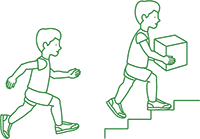
GMFCS Level I
Children walk at home, school, outdoors and in the community. They can climb stairs without the use of a railing. Children perform gross motor skills such as running and jumping, but speed, balance and coordination are limited.
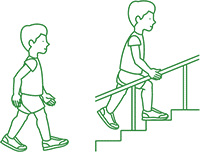
GMFCS Level II
Children walk in most settings and climb stairs holding onto a railing. They may experience difficulty walking long distances and balancing on uneven terrain, inclines, in crowded areas or confined spaces. Children may walk with physical assistance, a handheld mobility device or used wheeled mobility over long distances. Children have only minimal ability to perform gross motor skills such as running and jumping.

GMFCS Level III
Children walk using a hand-held mobility device in most indoor settings. They may climb stairs holding onto a railing with supervision or assistance. Children use wheeled mobility when travelling long distances and may self-propel for shorter distances.

GMFCS Level IV
Children use methods of mobility that require physical assistance or powered mobility in most settings. They may walk for short distances at home with physical assistance or use powered mobility or a body support walker when positioned. At school, outdoors and in the community children are transported in a manual wheelchair or use powered mobility.

GMFCS Level V
Children are transported in a manual wheelchair in all settings. Children are limited in their ability to maintain antigravity head and trunk postures and control leg and arm movements.
References:
- GMFCS descriptors copyright © Palisano et al. (1997) Dev Med Child Neurol 39:214-23 CanChild Illustrations copyright Version 2 © Bill Reid, Kate Willoughby, Adrienne Harvey and Kerr Graham, The Royal Children’s Hospital Melbourne.
- See GMFCS-E&R. Gross Motor Function Classification System – Extended and Revised website for more information.
Manual Ability Classification System (MACS)
The ability of children from 4 - 18 years old with cerebral palsy to handle objects in everyday activities can be categorised into 5 levels using the Manual Ability Classification System (MACS).
Knowing a child’s MACS level can help parents, teachers and others to understand situations in which a child is independent and the extent to which they need support or adaptations.
MACS level is determined based on knowledge about the child’s actual performance in daily life. It is not done by conducting a specific assessment, but by asking someone who knows the child and how that child typically performs.
MACS levels
- MACS Level I - Objects are handled easily and successfully.
- MACS Level II - Handles most objects but with some reduced quality and/or speed.
- MACS Level III - Handles objects with difficulty – the child will need help to prepare and/or modify activities.
- MACS Level IV - Handles a limited selection of easily managed objects and always requires some help from others.
- MACS Level V - The child is not able to handle objects or to complete even simple actions with their hands.
References:
- Visit the MACS Manual Ability Classification System website for more information.
